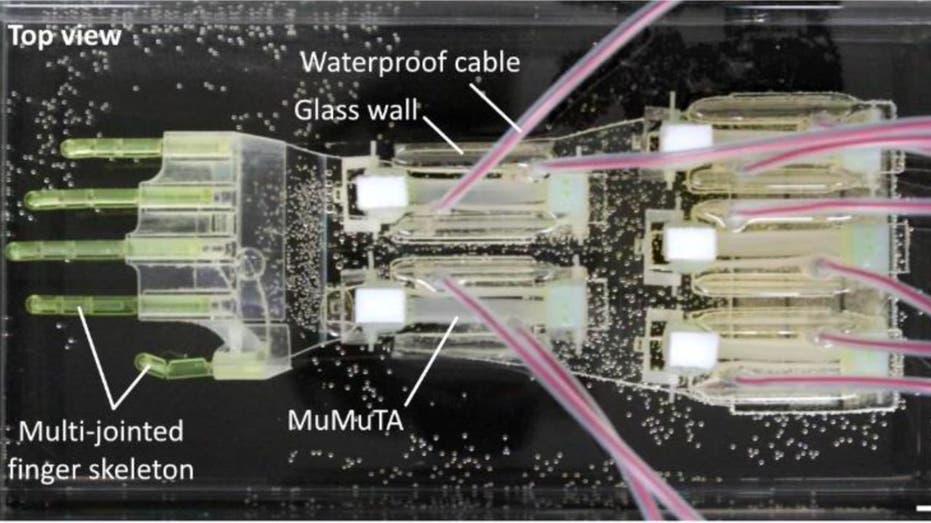The Future of Robotics: Lab-Grown Muscle Powers Biohybrid Robot Hand

Revolutionary Robotics Development in Japan
A remarkable breakthrough in robotics has emerged from the innovative minds at the University of Tokyo and Waseda University in Japan. Researchers have successfully created a biohybrid hand, which combines lab-grown muscle tissue with advanced mechanical engineering. This pioneering technology allows the hand to grip objects and perform gestures, ushering in a new era of robotics with a wide array of potential applications.
The Unique World of Biohybrid Robotics
As soft robotics and advanced prosthetics gain popularity, the fusion of living tissue with mechanical components remains a relatively unexplored territory. The field of biohybrid science is still in its nascent stages, with only a handful of existing examples, such as artificial fish powered by human heart cells and robots using locust ears for auditory capabilities. The development of this biohybrid hand represents a significant leap forward in the practical application of biohybrid technologies.
Innovative Techniques Behind the Biohybrid Hand
So, how did the researchers accomplish this feat? The team began by cultivating muscle fibers in the lab. Acknowledging that these fragile tissues lacked sufficient strength on their own, they bundled them into structures termed “multiple tissue actuators,” or MuMuTAs. “Our key achievement was developing the MuMuTAs,” stated Shoji Takeuchi, a prominent researcher from the University of Tokyo.
-
Anthropic Unveils Cost-Effective Claude Haiku 4.5, Matching Past Frontline Performance

-
Windows Defender Security Center Scam: Essential Tips to Shield Your Computer from Fake Alerts

- Understanding Blockchain Technology: Concepts, Uses, Types, and Environmental Impact
-
SpaceX’s Starship Prepares for Critical Test Flight as Firefly Explores Japanese Launch Opportunities

The groundbreaking study detailing this creation was published in the journal *Science Robotics*. Takeuchi elaborated on the innovative process, explaining that by rolling the thin strands of muscle tissue similarly to a sushi roll, they ensured that the bundled fibers provided enough contractile force and length necessary to drive the hand’s movements effectively.
Astonishing Properties of the Biohybrid Hand
One of the most intriguing discoveries made during the research was that the biohybrid hand exhibited fatigue akin to that of a human hand. After just 10 minutes of operation, the muscle tissue’s force diminished, yet it demonstrated remarkable recovery within an hour of rest. This observation underscores the lifelike characteristics of the engineered muscle tissue.
Despite its impressive capabilities, Takeuchi and his team recognize that the biohybrid hand is currently a proof of concept. In their study, the hand was submerged in liquid to reduce friction, and future enhancements could involve the addition of elastic materials or more MuMuTAs to address the challenge of the segments returning to a neutral position post-flexion. However, the successful bundling of the muscle tissue has addressed a critical limitation in the scaling of biohybrid devices, which previously could only achieve sizes of about one centimeter.
Potential Applications and Future Implications
The advancement of MuMuTAs signifies a pivotal moment in the quest to replicate biological systems, often requiring larger scales for practical use. While the field of biohybrid robotics remains in its infancy, this innovative technology holds the promise of revolutionizing advanced prosthetics. Additionally, it could serve as a valuable resource for exploring muscle tissue functionality, testing surgical techniques, and developing pharmaceuticals targeting muscle-related conditions.
A Glimpse into the Future
The creation of the biohybrid hand exemplifies a remarkable integration of biology and engineering. Although still in its early development stages, this technology offers a vision of a future where robots can mimic human-like movements and responsiveness. The introduction of MuMuTAs has overcome significant challenges, paving the way for more advanced prosthetics and enhancing our understanding of muscle tissue.
If biohybrid prosthetics like this become available, what specific features or capabilities would you find most crucial? We invite you to share your thoughts with us at Cyberguy.com/Contact.
For more insights and security updates, subscribe to my free CyberGuy Report Newsletter by visiting Cyberguy.com/Newsletter.
Stay Connected
Feel free to ask Kurt any questions or suggest topics you would like us to cover. Follow Kurt on his social media channels for additional tech tips and advice.
Copyright 2025 CyberGuy.com. All rights reserved.
